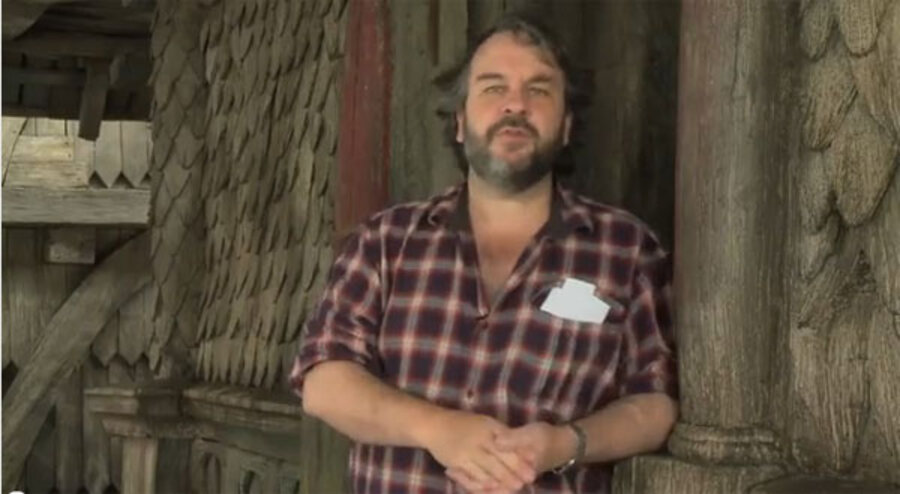'The Hobbit' production team releases another behind-the-scenes video
Loading...
The next installment in the behind-the-scenes “Hobbit” video series was released yesterday, detailing the process that goes into location shooting for the two “Hobbit” films.
There were only a couple glimpses of scenes in progress – near the beginning of the video, director Peter Jackson told the camera teasingly, “I can’t show you the amazing set that’s over there and the incredible thing that’s over there because you’re not allowed to see that until 2013!,” referring to the second movie’s release date. But the video featured many actors, including Martin Freeman, who plays Bilbo Baggins; Ian McKellan, who’s reprising his role as wizard Gandalf; and many actors playing dwarves, in full costume.
There were also numerous shots of the New Zealand vistas where the film production team is shooting, in addition to shots of two characters being filmed jumping from one tall tree to another, McKellan walking in costume, and dwarves heading down a river in barrels in order to escape from elves who had captured them.
The almost twelve-and-a-half-minute video used a Middle-earth-style map to show how the first and second units criss-crossed New Zealand separately to reach each location. On day 127, the exact middle of the shoot, according to Jackson, the two units met up in Wellington.
The actors and production crew joked about the beautiful New Zealand locations at which they were filming.
“You’re on the sets in the studio and they look so real,” said actor Adam Brown, who plays dwarf Ori. “You come out on location and it almost looks fake.”
“I’m just worried about the dinosaurs,” best boy Ants Farrell said dryly, referencing the Jurassic Park-like lush greenery of the shooting location.
The crew also detailed their efforts in building a long ramp when the production filmed at Turoa Ski Field near Mt. Ruapehu, which is part of Tongariro National Park. The area’s protected status meant the production team and actors couldn’t walk on many areas of the ground, so the massive ramp was built. Freeman called the area his favorite location at which to shoot.
Jackson pointed out that the river at that location was the water actor Andy Serkis had jumped into to catch fish while playing the creature Gollum in the original “Lord of the Rings” trilogy. Serkis served as second unit director for some filming for “The Hobbit” movies in addition to reprising his role as Gollum.
Many of the second unit locations at which Serkis shot were reachable only by helicopter, and many were in the mountains.
“We’re shortly going to do a rendition of the hills are alive with ‘The Sound of Music,’” Serkis said as they set up to film on one mountaintop, pointing at one crew member. “He’s getting into his Maria position.”
The video also details the massive output of the catering department, which had used up a ton of oranges so far during production and distributed between 200 and 300 cups of coffee a morning.
Check out the video below:
Molly Driscoll is a Monitor contributor.







